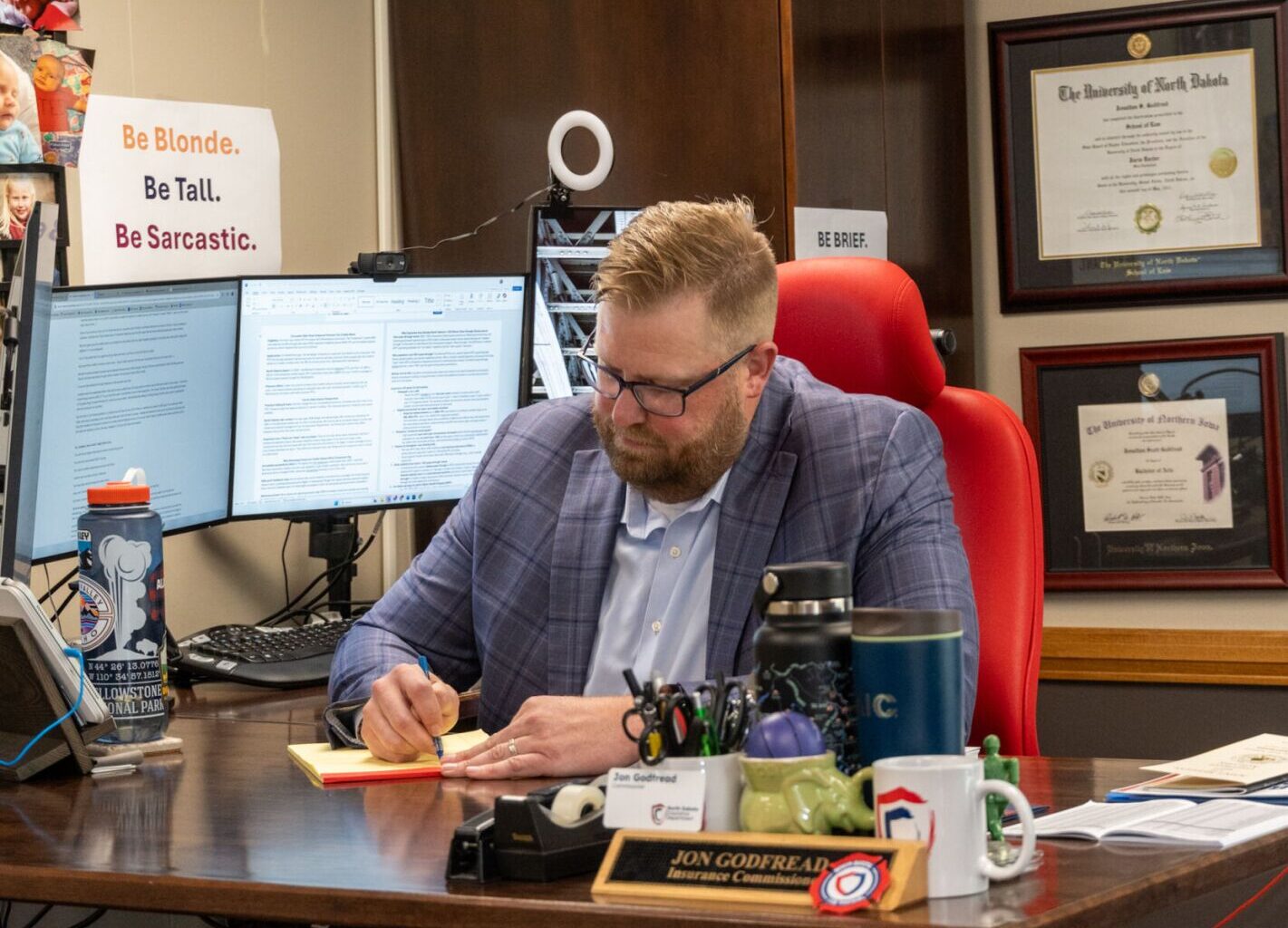MINOT — In recent weeks I’ve been quoting North Dakota Insurance Commissioner Jon Godfread a lot, and for good reason.
During
on our Plain Talk podcast, Godfread, a Republican, made some painfully accurate predictions about health insurance premiums that, in turn, are central to why the federal government is shut down right now.
“I’m really worried about this upcoming open enrollment period,” he said. “We’re going to see pretty significant rate increases across the board across the country.”
He was right. Americans across the board are facing a stiff hike in the cost of health insurance (which, in turn, is driven by the spiraling cost of health care). The average premium price increase for a mid-tier plan offered on the individual marketplace, specifically, is
In North Dakota, the average premium increase for individual insurance plans, as approved by Godfread’s office,
though that’s assuming Congress continues so-called “enhanced subsidies” for those rates.
“Our approved rates reflect the state’s review and adjustments, but the larger variable for 2026 will be determined at the federal level,”
Godfread said in a release announcing the new rates.
That’s coming on top of the cost of just about everything increasing. President Donald Trump
claims that inflation isn’t happening,
but anyone who has been shopping recently, be it for anything from groceries to school supplies, knows this isn’t true.
Godfread also predicted that this price hike will drive people out of the insurance marketplace. Specifically people like small business owners and farmers who buy out of the individual insurance marketplace.
“My concern is you’ve got a number of folks who who have to go out and purchase their own health care … who simply will not do that anymore,” he said. “They will be priced out of the market.”
That, too, is happening. Social media can be full of lies, but it can offer us a zeitgeist for the public’s sentiments in a given moment. Right now, one needn’t look far to find North Dakotans struggling with the premium hikes Godfread warned about.
“The premium is increasing A LOT for our family and I am not even sure what the purpose is anymore considering the deductibles are insane and we pay such high copays,” one North Dakotan wrote in a Facebook discussion this week. “Being self-employed or employed by someone who doesn’t offer health insurance, I would love to know what other families are doing.”
Some of the answers to that ask for advice are pretty grim. “Yeah, I don’t plan to NOT be self-employed so I may just have to not have health insurance,” one commenter wrote.
Apologists for the politicians who are allowing this to happen will, at this point, usually argue that the enhanced subsidies for these insurance premiums were meant to be temporary. They were implemented during the pandemic, and with that unhappy moment in American history behind us, they should be discontinued. Also, our nation is $38 trillion in debt, and our last three presidents — Donald Trump, Joe Biden and Donald Trump again — have been irresponsible spendthrifts. We have to rein in spending, and that’s going to mean some tough choices.
That’s not an unfair argument, though I suspect that another facet of it, that usually goes unsaid, is that those making it generally aren’t on the individual insurance marketplace. They won’t face the premium hikes, thus, it is not their problem.
Only, it is our problem.
A third prediction Godfread made back in August, which hasn’t come true yet if only because it hasn’t had time to yet, is that an exodus from the individual insurance marketplace will set off a “death spiral” for the insurance industry precipitated by the fundamental, immutable reality of how insurance pools work.
“The folks who will maintain that coverage,” which is to say those who will stay in the individual market despite higher premiums, “generally are probably your sicker population who don’t have a choice,” Godfread said. “That leads to a little bit of a death spiral, is what they call it, where that population is very, very high cost. You don’t have the low-cost individual to help subsidize that.”
Insurance works by spreading out the costs incurred by an individual across a group of insured. Health insurance pools, specifically, rely on younger, healthier people, who do not consume a lot of health care, to pay premiums that cover the care provided to older, less healthy people.
If the younger, healthier people who have less need for health care, and for whom going without insurance is somewhat less risky, opt out of the marketplace, that leaves only the people who are more expensive to cover.
That drives up premiums. If it goes on long enough, the cost increases will hit not just the people in the marketplace, but all who are insured.
Government subsidies aren’t the long-term solution. We need fundamental reforms for how Americans access health care. The insurance industry already has to come to state-level regulators like Godfread to get premium increases approved. They have to make a formal case justifying them, too. Perhaps health care providers should have to do the same.
But we’re also living in a world where Congress can’t even keep the federal government open. In fact, the government is closed because Trump and Republicans won’t countenance even negotiating a plan for the insurance subsidies with Democrats.
Our choices, in this fraught moment, are to continue the subsidies, or the death spiral Godfread predicted.
Maybe we should choose something other than the death spiral.

